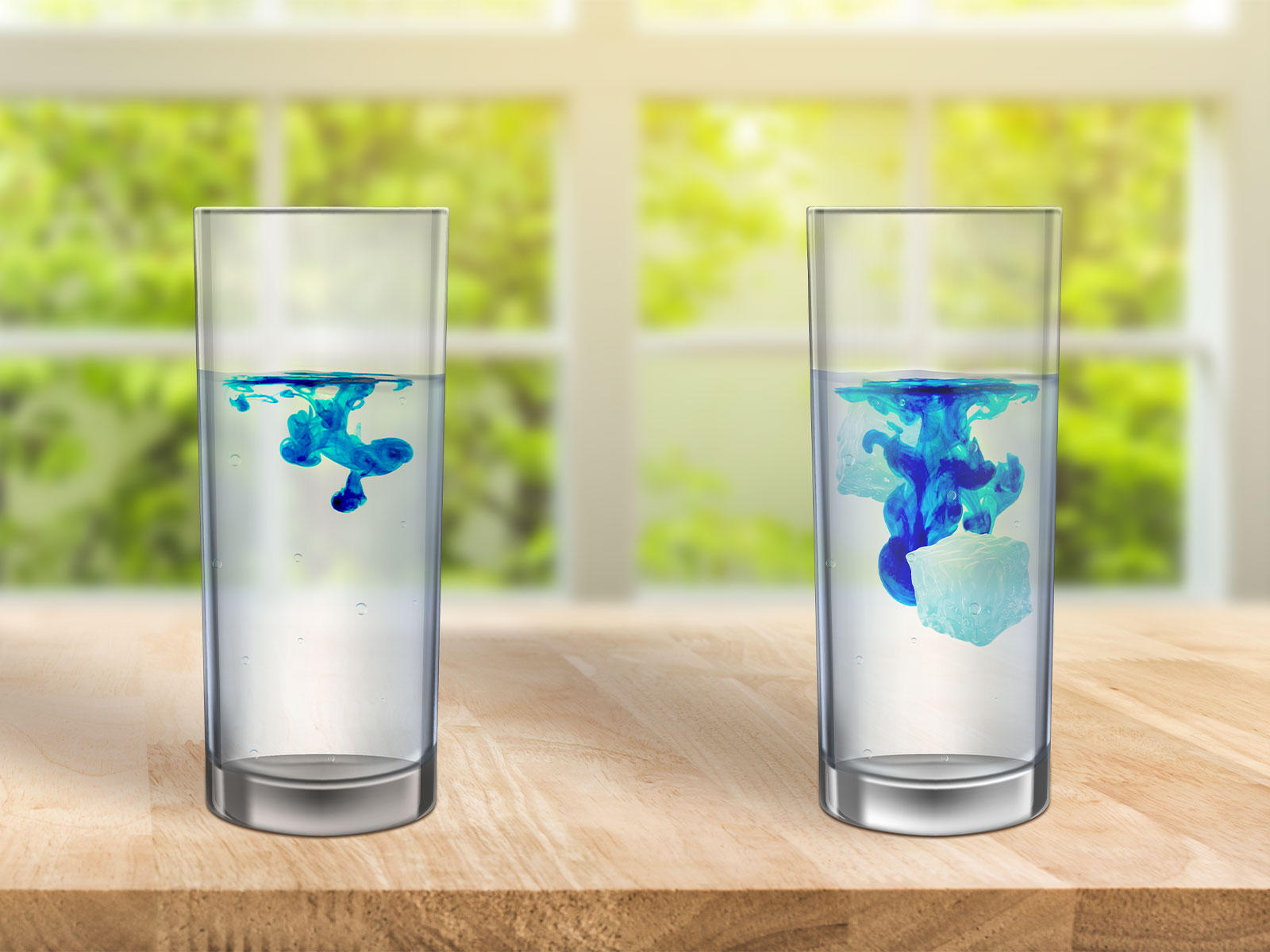This simple experiment is fun to watch, as the food coloring spreads in the water, and is a great way to observe and learn how water currents work when two different temperatures meet. Mixing colors using different temperatures can show us how quickly something mixes too. Which temperature mixes colors faster, hot or cold? Predict what you think will happen and then give this experiment a try!

What You’ll Need
2 clear glasses filled with warm water
1 ice cube
Red food coloring
What to Do
Set the two glasses on a countertop.
Place an ice cube in one of the glasses.
Put a drop of red food coloring in each glass.
Watch how the color moves through the water in both glasses.
How It Works
Did you notice that the color moves faster throughout the water with the ice cube? That’s because cold water from the melting cube is denser than the warm water around it. As the cold water sinks, it creates a downward current. That forces warm water to flow upward from the bottom, and the two kinds of water begin to mix. Those currents quickly mix the color into the water.
Extend the Fun
Younger kids: Play with the number of ice cubes in the cup. Add another ice cube when the first cube has nearly melted. Then try two. Experiment with putting the drops in at different times. See what happens when you use different colors at different times in the process. Can you make two colors mix themselves together?
Older kids: Make colored ice cubes, and then repeat the experiment. Take pictures of what’s happening at each step. How is the experiment the same and how is it different compared to the first version? What do you notice about the way the color from the ice cube infuses the water?
Now try using cold water without an ice cube in it. Are the results different without the melting ice creating a downward current?

